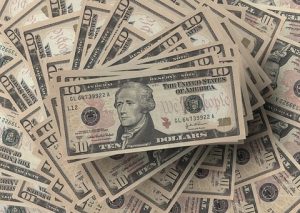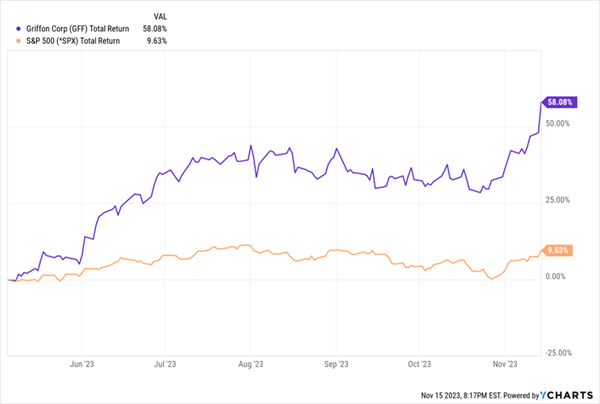These 5 Companies Pay Regular “Special Dividend” Bonuses
Quarterly dividends.
Getting paid every 90 days. Ninety. Who wants to wait that long?
That’s life as a vanilla income investor. These poor folks (literally!) have no idea about “special dividend” stocks.
These are companies that pay each shareholder hundreds, thousands, even tens of thousands of dollars a year more than expected. The payments often come around the holidays. Think of them as year-end bonuses.
Beats a subscription to the jelly-of-the-month club!
These special dividends can make a big retirement difference. I’m talking about a 1.3% “headline yield” that actually adds up to 6%, and a 4% print that really totals 11% per year.
Mainstream websites, for whatever reason, are not smart enough to track special dividends. These one-time payouts trip up the machines, which assume they are going to be “one and done.”
But often, specials keep coming. Here’s why.
Special Dividend #1: Sharing Profit Windfalls
Just a week or so ago, Cleveland-based aerospace manufacturing firm TransDigm Group (TDG) announced a blowout Q4 and full year. Fiscal-year profits were up 50%. Revenues improved by more than 20%. And that prompted TDG to announce a $35-per-share special dividend. Sure, at nearly $1,000 a share, that only comes out to a 3.5% yield—but given that TDG typically pays no dividends whatsoever, Wall Street had plenty to be excited about.
TDG Shares Take Off on Special Dividend Announcement
Special Dividend #2: We Sold Something for a Lot of Money!
Another pretty common reason to announce a special dividend is a one-time influx of cash earned from either selling off part of the company or unloading most or all of a large stake in another firm.
Back in February 2023, Ford (F) said it would pay a 65-cent-per-share special dividend (a nearly 6% yield on today’s prices!) after selling most of its ownership stake in EV maker Rivian (RIVN).
Special Dividend #3: The Totally Normal Special Dividend
Every retiree loves regular dividends. When you’re no longer bringing in a salary, those consistent payments help you sleep better at night.
That said, while many companies can manage to pay regular dividends at a flat or growing rate for decades on end. But that kind of program is pretty inflexible—and if a company suddenly can’t afford to pay up, the solution is usually a sizable dividend cut, or even a dividend suspension!
However, some companies have become attuned to this dynamic, and rather than writing checks their cash flow can’t cash, they use a “hybrid” dividend program—one where they offer a certain base level of regular dividends, then “top up” the payout regularly via these special dividends as profits allow.
5 Special Dividend Payers
Because special dividends fall outside the norm, some data providers have a difficult time accounting for them.
I can’t tell you the number of times a stock has popped up on my radar—only for me to find that its high yield was the result of a one-time payout, or on the flip side, that a stock actually had a much higher yield than listed because it couldn’t account for the company’s “regular” special dividends.
What do I mean? Well, let me show you a few dividend payers that are much more than meets the eye.
TransDigm (TDG)
Listed Dividend Yield: N/A
Dividend Yield With Specials: 3.5%
The $35 special dividend I mentioned above wasn’t TransDigm’s first special payout—in fact, it was the fourth time in five years that TDG rolled out an irregular dividend. (It also paid one in 2022, 2020, and 2019.)
That’s not enough to expect that TransDigm will become a regular dividend payer anytime soon, or even enough to say that you can count on TDG to provide you with at least some income each year through special dividends.
But it should be enough to put TDG on your watch list. TransDigm has been solidly and consistently profitable for more than a decade, and those profits have broadly been pointed upward—fiscal 2023’s net income was a corporate record. It generated more than $1 billion in unlevered free cash flow. I would be stunned if TDG didn’t eventually pay a regular dividend, though we might have to wait.
Griffon Corp. (GFF)
Listed Dividend Yield: 1.4%
Dividend Yield With Specials: 5.9%
Griffon Corp. (GFF) is a more conventional dividend player that might—might—be toying with the hybrid model.
This holding company’s subsidiaries deal in both consumer and professional products, as well as home and building products. Brands include storage solution firm ClosetMaid, lawn-and-garden toolmaker Ames, and garage doormaker Clopay, among others.
Griffon was one of several cheap stocks that hit my radar in May. The market finally caught wind, with investors driving shares nearly 60% higher since then.
Griffon Keeps Building Momentum
The stock was battered earlier this year in the midst of activist involvement and a strategic review—one that resulted in GFF management deciding not to sell out, depressing shares. But the stock has rebounded (and more!) since then. Driving more recent buying was the company’s fiscal Q4 report, where Griffon announced that it flipped from a $191 million loss last year to a $78 million profit in 2023.
When Griffon announced the result of its strategic review this spring, it also announced a $2-per-share special dividend—its second in as many years. It’s possible this is the start of a hybrid dividend program. But if you need income, look elsewhere. GFF’s regular payout, while growing at a healthy clip for years, still calculates out to a lower yield than the S&P 500.
Buckle (BKE)
Listed Dividend Yield: 3.9%
Dividend Yield With Specials: 11.3%
Fashion retailer Buckle (BKE) is a little stock with a big yield—though that yield is largely supported with special dividends.
Buckle sells mid- to higher-end clothes, accessories and footwear. While that usually would translate into a stock that has been spanked over the past few years, the Buckle has been an astonishing story, enjoying a boom in profits that has ushered BKE stock to a number of all-time highs over the past few years.
But can you count on it?
Even Buckle management seems to understand how fickle fashion is. The yield on its hybrid dividend program leans more heavily on the special payouts than it does on the regulars—and the special dividends not only skip the occasional year (like in 2022), but they vary widely in size ($1 per share in 2019, $5.65 per share in 2021, $2.65 this year).
A small red flag? Buckle’s regular dividend has stalled since late 2021 after a few years of growth. BKE still only pays about 30% of its profits out as regular dividends, so it has plenty of room. But if you do plan to collect long-term checks from Buckle, you’d like to at least see those checks keep up with inflation.
Old Republic International (ORI)
Listed Dividend Yield: 3.5%
Dividend Yield With Specials: 7.0%
Old Republic International (ORI) is a general- and title-insurance provider, and if you’re at all familiar with the insurance industry, you know that profitability can really vary from year to year.
No wonder, then, that ORI management has decided that, rather than go full-throttle on a regular payout that it might struggle to pay sometimes, it should instead use special cash dividends to augment its regular payout. In the past five years, Old Republic has paid out four substantial special dividends. Indeed, its yield roughly doubles when factoring in its most recent special payout.
ORI didn’t pay a special in 2020, and it so far hasn’t paid one in 2023, either. So a high-single-digit yield isn’t exactly written in stone.
But if you need a decent (not great, but decent) yield that you know you can count on, ORI delivers. This mild-mannered insurer is, in fact, a Dividend Aristocrat with four decades of uninterrupted payout hikes under its belt.
ORI: Special Dividends Don’t Make for a Pretty Chart, But We’ll Take Them Anyways
If you’re thinking to yourself, “I know Aristocrats, but I don’t know ORI,” that’s because Old Republic isn’t part of the blue-chip S&P 500 Dividend Aristocrats—it’s a member of the lesser-known S&P MidCap 400 Dividend Aristocrats.
CNA Financial (CNA)
Listed Dividend Yield: 4.3%
Dividend Yield With Specials: 7.3%
Another insurer with a hybrid program is CNA Financial (CNA), one of the largest commercial property and casualty (P&C) insurers in the U.S. And interestingly enough for a $10 billion company, it’s also 90% owned by someone else—conglomerate Loews (L).
Insurer profits are what they are—CNA hasn’t enjoyed consecutive years of bottom-line growth since 2016-17. But revenues have improved more consistently, and net income, while a see-saw, are broadly headed higher.
CNA’s Year-to-Year Isn’t Spectacular, But the Trend Is Our Friend
CNA offers more consistency than many P&C insurers, and that bleeds through to its dividend.
The regular payout is both good and rising—the dividend yields more than 4%, and it has improved by a modest 20% overall across the past five years. And while CNA’s special dividend payouts vary widely, the company has paid something extra each year since 2014!
While specials are special, we don’t want to be hoping for a year-end payout when we’re retired on dividend income. We want—heck, we demand—our payments to be dialed in.
Quarterly payers don’t pay often enough. Which is why serious income investors own monthly dividend stocks.
What’s better yet is that, thanks to the September and October selloffs, select monthly dividend payers are now dishing 9%+ annual yields or better. Sound awesome? It is—so much so that these dividend deals are unlikely to last. Please click here for my latest research on the best monthly dividend stocks.
This post originally appeared at Contrarian Outlook.
Category: Dividend Stocks To Buy?









